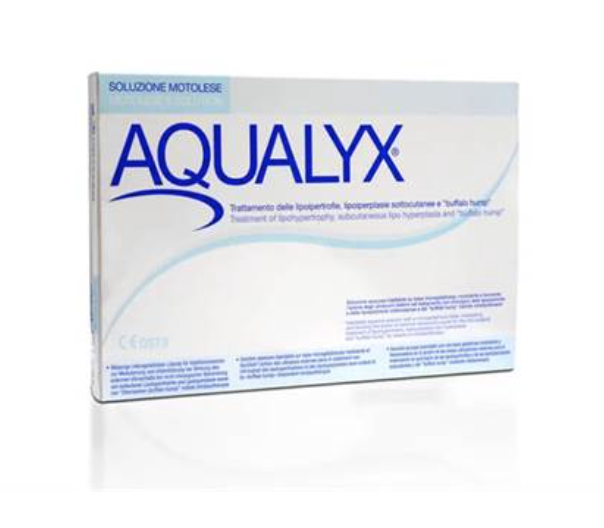Description
Aqualyx, developed for the non-surgical reduction of localised fat under the skin is a gel-based aqueous solution, which dissolves fat and is biocompatible and biodegradable. The fat dissolving injection has an aqueous compound solution of 12alfa-dihydroxy-5beta-24-oico cholanic acid sodium salts which is a modified compound of Cholanic Acid also known as Deoxycholic Acid.
How does it work?
Aqualyx is a phosphatidylcholine free solution, in which the principal-agent which leads to the destruction of the fat cells is a detergent (weakened sodium deoxycholate). The detergent dissolves the fat by means of emulsification of the adipose cell membrane. Aqualyx , thanks to its easy transdermal delivery with Sonolyx , provokes cellular lysis releasing cellular debris and triglycerides, which are progressively disposed of by the monocyte-macrophage system and drain into the lymphatic system.
Who is the best patient for this treatment?
Whoever presents with “localized adiposity”, or accumulations of subcutaneous adipose tissue which are unresponsive to normal metabolic actions (low-calories diet and physical activity), is an ideal candidate for the treatment with ultrasound and Aqualyx.
For example, women can successfully treat unsightly fat pads present in anatomical areas such as hips, “coulette de cheval”, of the inner knee and thigh. Instead, males can easily reduce abdominal fat and double chin. Aqualyx is not indicated in obese or significantly overweight patients.
Aqualyx, for precautions measures, must NOT be used in:
– subjects that present active or systematic acute pathologies in the area to be treated;
– patients with diseases affecting organs or organ systems in an acute phase or with evident functional deficits;
– patients with severe autoimmune diseases;
– immunosuppressed patients;
– pregnant or breastfeeding women.






